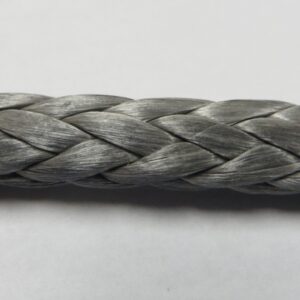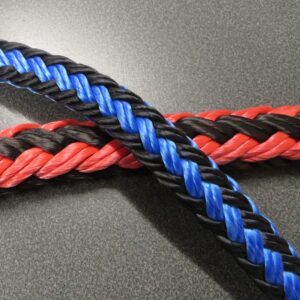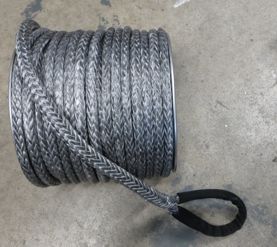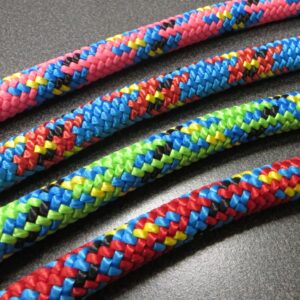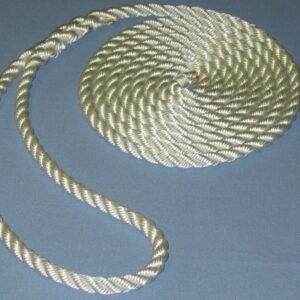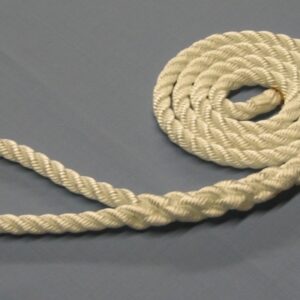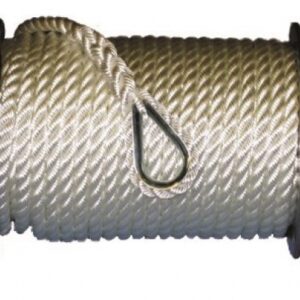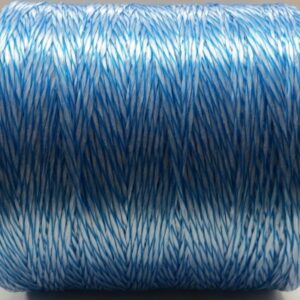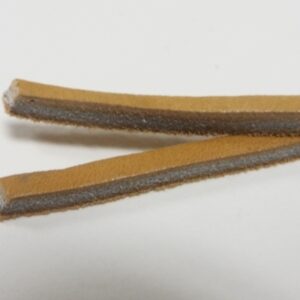Frequently Asked Questions
How long does arborist rope last?
The lifespan of arborist rope depends on factors like usage, maintenance, and environmental conditions. Generally, high-quality arborist ropes can last between three to five years with proper care, although frequent use may shorten this duration.
How strong is arborist rope?
The strength of arborist rope is crucial for safety and performance in tree care. Typically, arborist ropes have a tensile strength ranging from 4,000 to 7,000 pounds, depending on the material and construction used.
What is the difference between climbing rope and arborist rope?
The difference between climbing rope and arborist rope lies in their design and intended use. Climbing ropes are primarily used for rock climbing and have specific strength and stretch characteristics, while arborist ropes are designed for tree climbing and rigging, offering unique durability and abrasion resistance for working in wooded environments.
What are the strongest boot laces?
The strongest boot laces are typically made from durable materials like nylon or polyester, which offer excellent tensile strength and resistance to wear and tear, ensuring they hold up under heavy use and harsh conditions.
What size shoe laces?
The size of shoelaces varies depending on the type of shoe. Generally, standard lace lengths range from 36 to 108 inches, with most athletic shoes requiring laces around 45 to 54 inches.
How long are boot shoe laces?
Boot shoe laces typically range from 45 to 72 inches in length, depending on the height and style of the boots. It's important to choose the right length for optimal fit and function.
What types of arborist ropes are available?
The types of arborist ropes available include climbing ropes, rigging ropes, and landing lines, each designed for specific applications in tree care and maintenance, ensuring safety and efficiency for professionals in the field.
Can arborist rope handle extreme weather conditions?
Arborist rope is designed to handle extreme weather conditions effectively. Its durable construction and weather-resistant materials ensure reliability during harsh environments, including heavy rain and intense sunlight, making it suitable for various outdoor applications.
How to choose the right arborist rope?
Choosing the right arborist rope involves considering factors such as diameter, material, strength, and application. Ensure the rope meets specific safety standards and is suited for the type of work you'll perform, whether climbing or rigging.
What is the weight limit for arborist rope?
The weight limit for arborist rope typically ranges from 5,000 to 10,000 pounds, depending on the specific type and construction of the rope. Always refer to the manufacturer's specifications for precise ratings.
Are there different grades of arborist rope?
Different grades of arborist rope exist to meet various performance and safety standards. These grades can vary in strength, durability, and flexibility, allowing users to select the most suitable option for their specific climbing or rigging needs.
How to properly store arborist rope?
Properly storing arborist rope is essential for maintaining its longevity and performance. Keep the rope clean, dry, and in a cool, dark place, using a rope bag or container to prevent tangling and UV damage.
What materials are used in arborist ropes?
Arborist ropes are primarily made from high-strength synthetic fibers such as polyester or nylon, which offer durability and flexibility. These materials ensure safety and performance in both climbing and rigging applications.
How does climbing rope differ in use?
Climbing rope differs in use based on its intended application, such as dynamic ropes for fall protection in climbing and static ropes for hauling or rigging. Each type is designed to meet specific safety and performance needs.
Are arborist ropes suitable for heavy lifting?
Arborist ropes are not typically designed for heavy lifting; they are primarily intended for climbing and rigging in tree care. For heavy lifting, specialized lifting slings or ropes with the appropriate load ratings should be used.
How to determine the length of arborist rope needed?
Determining the length of arborist rope needed involves assessing the height of the trees being worked on, factoring in the climbing technique, and adding extra length for safety and maneuverability.
What are common uses for boot laces?
Common uses for boot laces include securing footwear, providing flexibility in fit, and enhancing the aesthetic appeal of boots. They are essential for various activities, from casual wear to hiking and work environments.
How to select the best boot laces?
Selecting the best boot laces involves considering the lace material, length, and style that match your boots. For durability, opt for nylon or polyester, and ensure the length accommodates your boot's eyelet configuration for a secure fit.
What materials are best for durable boot laces?
The best materials for durable boot laces are typically nylon, polyester, and leather. These materials offer excellent strength, abrasion resistance, and longevity, making them ideal for withstanding heavy use and harsh conditions.
What styles of boots require special laces?
Certain styles of boots require special laces, such as hiking boots, combat boots, and dress boots. These laces may be designed for added strength, durability, or aesthetic appeal to ensure optimal performance and style.
How do I measure for shoe laces?
Measuring for shoe laces involves determining the length needed for your specific shoes. To do this, count the number of eyelets on one side of the shoe, then multiply that number by 30-45 centimeters (12-18 inches) to find the recommended lace length.
What is the standard length for shoe laces?
The standard length for shoe laces varies by shoe type, typically ranging from 27 to 108 inches. Most adult sneakers use laces around 45 to 54 inches long, while dress shoes generally require shorter lengths of about 30 to 36 inches.
Can I use standard laces for climbing shoes?
Standard laces are generally not recommended for climbing shoes. Climbing shoes require specialized laces that provide a snug fit and enhanced adjustability, ensuring better performance and safety during climbs.
Are elastic laces better for boots?
Elastic laces offer a more convenient fit for boots, providing flexibility and ease of use. They help maintain snugness without the need for constant re-tying, making them a practical choice for dynamic activities.
How do I replace broken boot laces?
Replacing broken boot laces is straightforward: first, remove the damaged laces, then select new laces that fit your boots and re-lace them through the eyelets, ensuring they are evenly tightened for comfort.
What colors are available for boot laces?
The available colors for boot laces include classic shades such as black, brown, and white, as well as vibrant options like red, blue, and green, ensuring a variety to match any style or preference.
How to keep boot laces tied securely?
To keep boot laces tied securely, use a double knot technique by first tying a standard knot and then looping the laces again before pulling tight. This method provides extra grip, preventing them from loosening during wear.
What is the average lifespan of boot laces?
The average lifespan of boot laces typically ranges from six months to two years, depending on usage, material quality, and environmental conditions. Regular inspections can help determine when to replace them for optimal performance.
How to clean and maintain shoe laces?
Cleaning and maintaining shoe laces involves a few simple steps. Remove the laces from the shoes, hand wash them with mild soap and warm water, then rinse thoroughly. Allow them to air dry completely before re-lacing.
Can boot laces be customized for style?
Boot laces can indeed be customized for style. You can choose from various colors, patterns, and lengths to match your personal flair and enhance your footwear.


